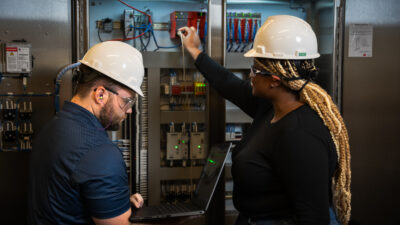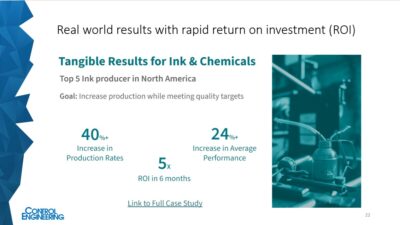At times it seems as if IT and business strategies are moving in opposite directions. For example, as manufacturers adopt business models that call for operating multiple plants and collaborating with numerous partners around the globe, they also are exhibiting a greater appetite for standard business applications that can be managed from central data centers.
At times it seems as if IT and business strategies are moving in opposite directions. For example, as manufacturers adopt business models that call for operating multiple plants and collaborating with numerous partners around the globe, they also are exhibiting a greater appetite for standard business applications that can be managed from central data centers.
This dichotomy can strain a company’s ability to move information throughout the supply chain in a timely fashion. It also appears to be inspiring advances in acceleration appliances—i.e., pieces of hardware that speed up network traffic.
While these devices have been around for some time, vendors are tailoring them to functional areas:
A partnership between appliance vendor Certeon and product life-cycle management (PLM) vendor UGS seeks to speed the movement of files created in UGS’s Solid Edge CAD program across corporate networks.
Covast, a supplier of business-to-business (B2B) integration solutions, offers an appliance called the Business Bot—or BBot—that shortens the time to forge the links necessary for exchanging electronic documents.
“Our key value is looking at data as it goes across a wide area network [WAN], and making it move faster. We do this through techniques we call intelligent networking,” says Gareth Taube, VP of marketing at Certeon, which introduced its first acceleration appliance in 2006.
Intelligent networking involves creating what Taube refers to as “blueprints” that contain information about the data that a company wants to move across its network. The blueprint is loaded into a piece of software called an object differencing engine (ODE).
The first time a document goes across the network, the Certeon appliance uses compression techniques to shorten the trip. On subsequent passes, the ODE examines the document, recognizes what has changed since the last time that document was retrieved from the database, and only sends the changes to the requester.
“In the case of Solid Edge, we understand what its CAD drawings look like,” Taube explains. “We also understand that collaborative teams work on these drawings—checking them in, checking them out, and making changes—across distributed organizations. Understanding the components of this traffic enables the ODE to recognize the changes to documents as they are being requested, and transmit only the changes.”
Hubbell Lighting increased engineering throughput—as measured by the number of change orders and engineer-to-order projects completed—by more than 60 percent after installing a set of Certeon appliances on the network that passes Solid Edge files across 12 facilities in North America and China.
“Before Certeon, it could take up to 20 minutes to open a single Solid Edge file,” says Kevin Poyck, VP of engineering for the Greenville, S.C.-based company, which makes both indoor and outdoor lighting products. “Now it’s down to about five minutes,” he adds.
Poyck says the installation was fast as well. “Someone from UGS configured the appliances,” he says. “They connected one at the main server in Greenville, and one at each remote location. The entire process took about half a day.”
Covast claims it takes less time for a small or midsize manufacturer to create an e-business link to a larger trading partner using the BBot integration appliance. It does, however, take the larger partner a bit of time to lay the groundwork for smaller partners to use the appliance.
Covast CEO Daan Scheer expects large companies to use BBots to establish trading hubs for smaller suppliers that lack the resources to establish sophisticated e-business infrastructures.
“Conducting e-business typically requires both companies to install software, and then do a significant amount of work with systems integrators to get their respective systems connected,” Scheer says. “And the hub partner has to repeat that every time they sign on a new partner.”
With BBots, Scheer says, the hub partner publishes a profile containing information about its supply chain processes and the types of documents it exchanges with partners on its network. Any supplier working with that company can lease a BBot—at a cost of $400 to $500 month—and download the larger partner’s profile to the appliance, which configures itself to exchange documents with the hub.
“These appliances will be especially valuable in industries with complex supply chains, where complex documents are routinely exchanged,” Scheer says. “In high-tech, for instance, a company could spend several thousand hours configuring a single RosettaNet connection for one supplier. With BBots, they create the profile once, and all suppliers have a plug-and-play situation.”



